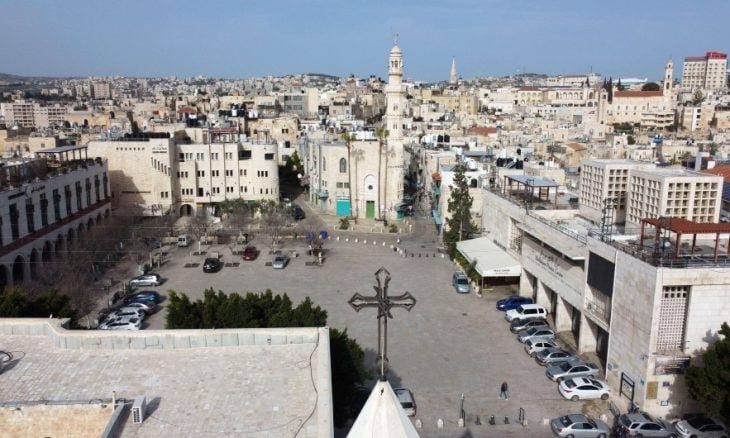The city of Bethlehem holds religious significance for both Christians and Muslims. It is recognized as the birthplace of Jesus Christ, who is revered as the Son of God in Christianity and as a divinely inspired prophet in Islam. The Church of the Nativity, a Byzantine basilica, was constructed by Helena, the mother of Emperor Constantine, to honor Jesus’ birth. This basilica is situated above a cave where, according to a tradition first recorded in the second century AD, Jesus was born. The church was originally dedicated in 339 AD.
Table of Contents
Ancient Roots – The Early History of Bethlehem
The city of Bethlehem has a rich history that predates Roman times, first documented in the fourteenth century BC through the Amarna letters. Archaeological findings from the Chalcolithic period and the Bronze and Iron Ages indicate that the earliest human presence was on the eastern slope of the city’s central hill and in the fields of Beit Sahour.
The Iron Age city was likely situated here, but by the tenth to eighth centuries BC, the town had shifted to the high ridge where present-day Bethlehem stands, particularly around and to the east of the current Church of the Nativity. During this period, the caves beneath the church were still in use. By 700 BC, Bethlehem’s significance had diminished, but it regained importance during the Hellenistic and Roman periods, particularly with the construction of the Jerusalem aqueduct, which diverted some of its water to the city.
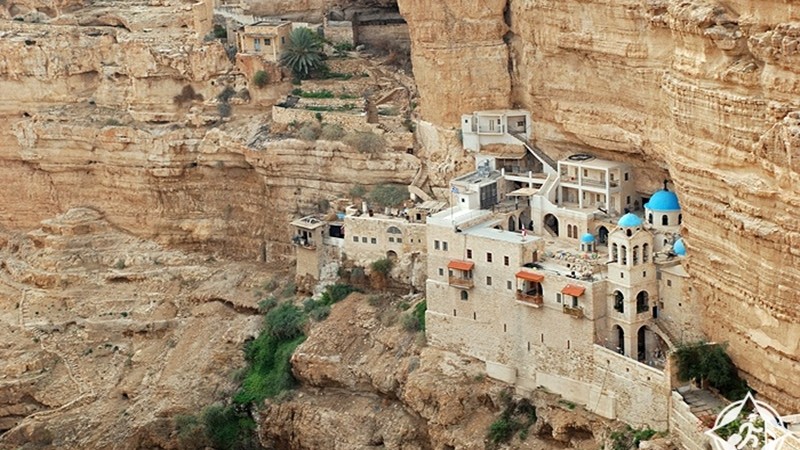
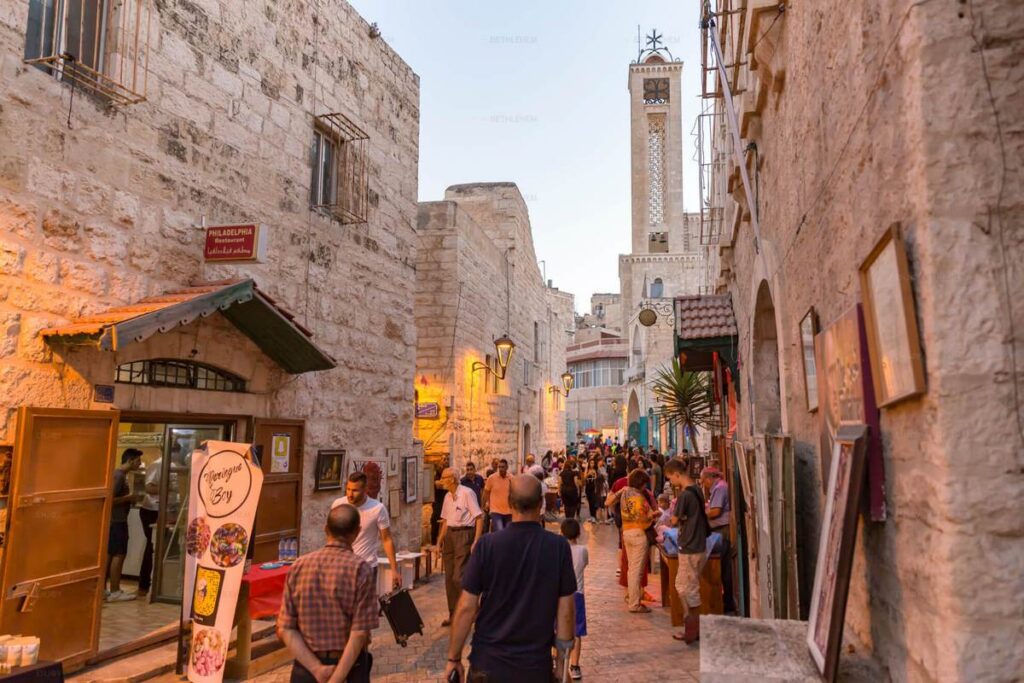
From Herod to Justinian – The Evolution of Bethlehem
Jesus’ birth in Bethlehem at the end of Herod’s reign shaped the town’s destiny. During the rule of Constantine, the first Christian emperor, the Church of the Nativity was constructed as one of three imperial churches in Palestine. In the late fourth century AD, Saint Jerome settled in Bethlehem and, with the help of Saint Paula, established two monasteries. The church was destroyed in 529 AD and subsequently rebuilt on a much grander scale under Justinian, and this reconstruction is essentially the structure that stands today. Bethlehem was also depicted on the Madaba mosaic map in the sixth century AD.
Significant Sites Around the Church of the Nativity
The Church of the Nativity is the focal point of Bethlehem and is surrounded by other significant sites associated with Christ’s birth. One such site is the Milk Grotto, an irregular cave carved into soft limestone located southeast of the basilica. According to Christian tradition, this is where Mother Mary nursed baby Jesus while hiding from Herod’s soldiers. Additionally, the Shepherds’ Fields, where the angel of the Lord is said to have appeared to the shepherds with the good news of Jesus’ birth, are situated about two kilometers east of Bethlehem. These fields include two competing sites: one managed by the Roman Catholics and the other by the Greek Orthodox Church.
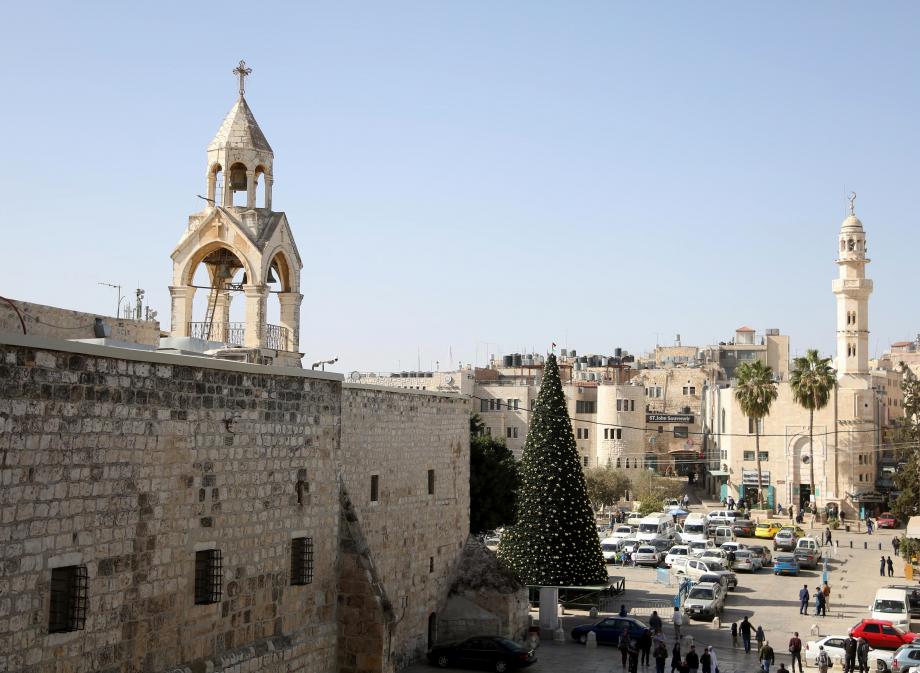
Festivities and Traditions in Bethlehem’s Old Town
Bethlehem’s old town is a vibrant center for various religious and traditional activities. The Patriarch Route, which follows Star Street, is the path of a religious parade that takes place every Christmas season. Manger Square hosts an annual grand celebration to commemorate the birth of Christ.
What Are the Most Important Things to See in Bethlehem?
Ready to embark on a journey through the sacred city of Bethlehem, where history and faith intertwine? Let’s discover the iconic landmarks that epitomize its rich religious heritage and cultural significance.
The Church of the Nativity
The original Church of the Nativity, the oldest church in the Holy Land still in use, was built under the patronage of Helena, the mother of Constantine. She visited Palestine on a pilgrimage in 325 AD to investigate the sites associated with the life of Jesus Christ, and subsequently selected the Grotto of the Nativity, the traditional birthplace of Jesus, as the site for the grand basilica, which was completed in 339 AD.
Within the church, two sets of stairs on either side of the main altar lead down into the grotto where Jesus was born. A silver star set in white marble, inscribed in Latin with “Here of the Virgin Mary Christ was born,” marks the location. In 2010, a Palestinian presidential committee was established to restore the church’s roof, which was in dire need of repair. In 2012, the Church of the Nativity and the Pilgrimage Route were added to the World Heritage List.
Milk Grotto
According to tradition, the Milk Grotto is where Mother Mary nursed baby Jesus while hiding from Herod’s soldiers before fleeing to Egypt. Situated southeast of the basilica, it is an irregular grotto carved out of soft white rock. Legend holds that drops of Mary’s milk fell onto the rock, turning it white. Revered by both Christians and Muslims, the milk-white rock is believed to possess healing powers and is said to aid women in nursing.
Saint Theodosius Monastery
Constructed by Theodosius in 500 AD, this monastery stands to the west of the historic village of Ubediyyeh, situated 12 kilometers east of Bethlehem. A cave with white walls serves as the resting place of Saint Theodosius, with tradition suggesting that the wise men sought refuge here after receiving a divine warning in a dream, advising them not to return to Herod.
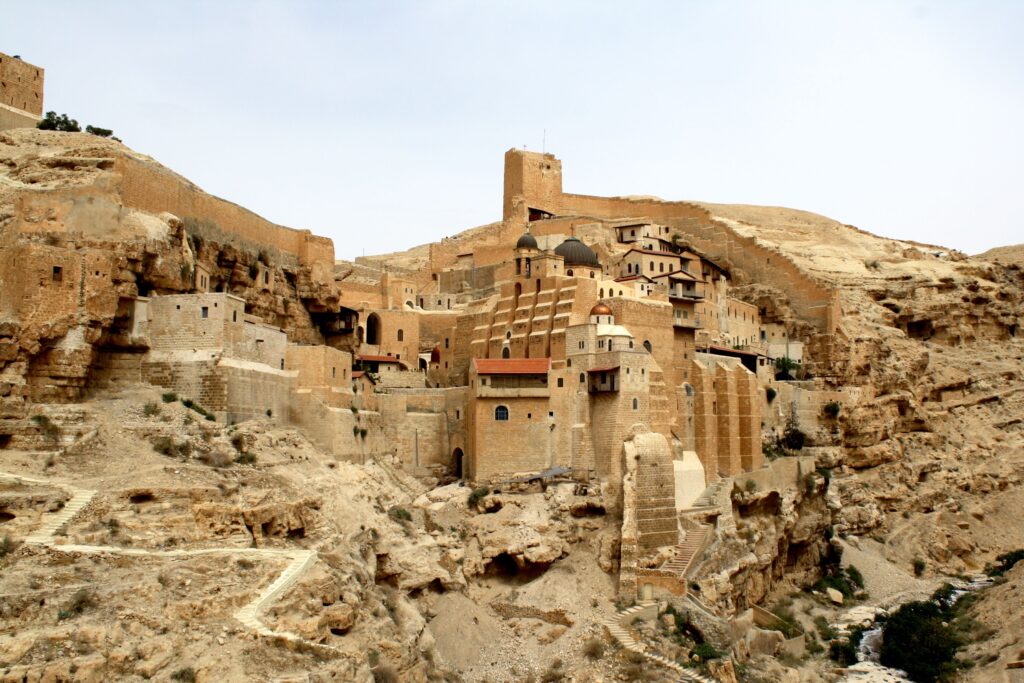
Mar Saba Monastery
Carved into the rock, overlooking the Kidron Valley 15 kilometers east of Bethlehem, this impressive monastery captivates the eye upon first sight. It upholds a lifestyle that has remained unchanged since the era of Constantine and observes a longstanding tradition of barring women from entry. Named after the revered monastic leader Saint Saba (439–532 AD), the monastery was established during the Byzantine period.
Masjid Bilal (Rachel’s Tomb)
This modest structure denotes the customary burial place of Rachel, the wife of Jacob, and holds significance for Christians, Muslims, and Jews alike. Erected during the Ottoman era, the current sanctuary and mosque stand along the Jerusalem-Hebron Road, near the northern entrance of Bethlehem.
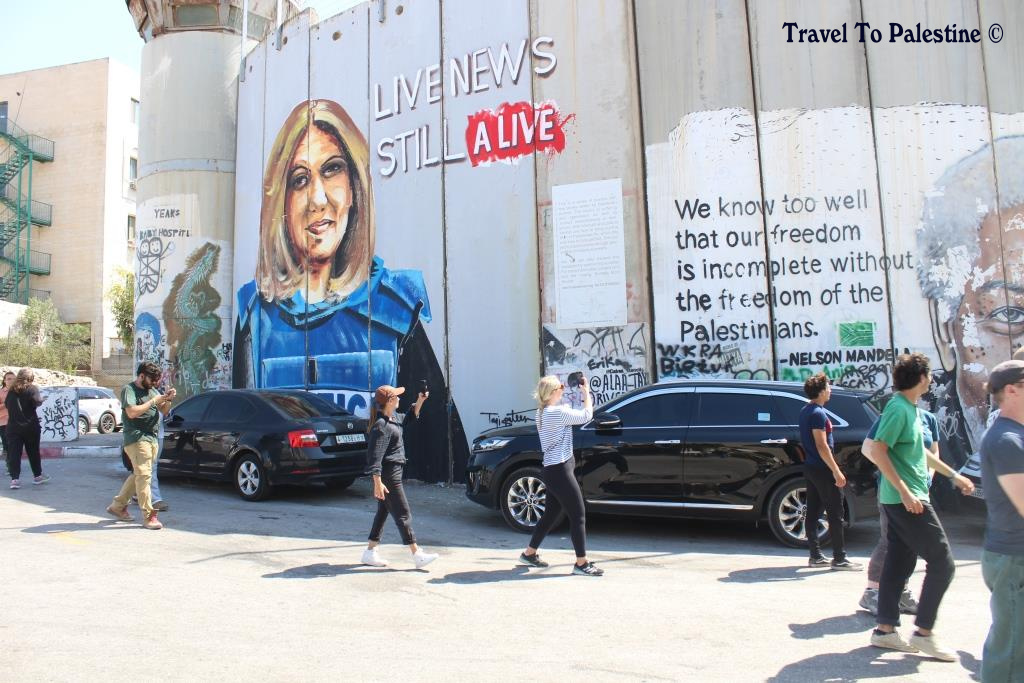
Artas
Situated in a verdant valley, Artas lies three kilometers to the south of Bethlehem. Its name, derived from the Latin word “hortus,” meaning paradise, likely reflects the abundance of lush vegetation and fertile soil. The village boasts numerous ruins, including a Crusader convent, the remnants of a Crusader church, and a castle, alongside several Roman, Byzantine, Islamic, and Crusader archaeological sites. Artas offers a stunning panorama of the magnificent Convent of Hortus Conclusus (closed garden) and the picturesque hills adorned with terraced green fields that surround it.
Solomon’s Pools
Nestled amidst pine trees within a small valley, located four kilometers south of Bethlehem, Solomon’s Pools comprise three expansive rectangular reservoirs crafted from stone and masonry, with a capacity of 160,000 cubic meters of water. While tradition ascribes these structures to King Solomon, their origins likely trace back to the era of Herod, possibly conceived under Pontius Pilate. Historically, these reservoirs collected spring and rainwater, supplying Bethlehem and Jerusalem through an intricate pumping system that remained operational until the British Mandate period. Adjacent to the pools lies Qalat al-Burak, an Ottoman fortress dating back to the seventeenth century, erected to safeguard the water sources.
Battir
Battir, situated west of Bethlehem and seven kilometers south of Jerusalem, embodies a remarkable village setting. Its landscape, featuring agricultural terraces and an intricate irrigation network, serves as a testament to human settlement ingeniously positioned near water sources, showcasing the effective adaptation of land for agricultural endeavors.
The village and its cultural surroundings encompass valleys (known as widian) stretching from Wadi al-Makhrour, close to Beit Jala, to Husan village. Among its notable features are expansive agricultural terraces, springs, irrigation systems, olive presses, ancient ruins (khirab), and stone agricultural watchtowers (manatir), referred to locally as “palaces” (qusoor).
In 2014, Battir, part of the Cultural Landscape of Southern Jerusalem, was added to UNESCO’s World Heritage List as a flagship site representing Palestine, Land of Olives and Vines. It serves as a focal point within the broader Palestinian Central Highlands landscape, spanning from Nablus in the north to Hebron in the south.
Herodion (Jabal Al-Furdais)
Perched atop a hill six kilometers southeast of Bethlehem, this fortress takes on a circular form, encompassing the remnants of an expansive palace commissioned by King Herod between 23 and 18 BC. Within the palace complex lay opulent amenities, including a circular edifice, fortified chambers, baths, and terraced gardens. The commanding presence of Herodion fort hill dominates the surrounding landscape, affording breathtaking vistas of the Dead Sea from its summit.
Conclusion
Bethlehem stands as a city of profound religious significance, cherished by both Christians and Muslims worldwide. From its ancient roots, documented in archaeological findings dating back millennia, to its pivotal role in shaping the destiny of Christianity through the birth of Jesus Christ, Bethlehem’s history is rich and multifaceted.
The Church of the Nativity, a symbol of reverence and devotion, stands as a testament to the enduring legacy of faith that permeates the city. Surrounding this iconic landmark are sites of equal importance, each bearing witness to the profound spiritual heritage of Bethlehem, and as visitors traverse the sacred streets of this historic city, they are invited to partake in its vibrant traditions and immerse themselves in its timeless narrative, where history, faith, and culture converge in a melting pot of profound significance.
